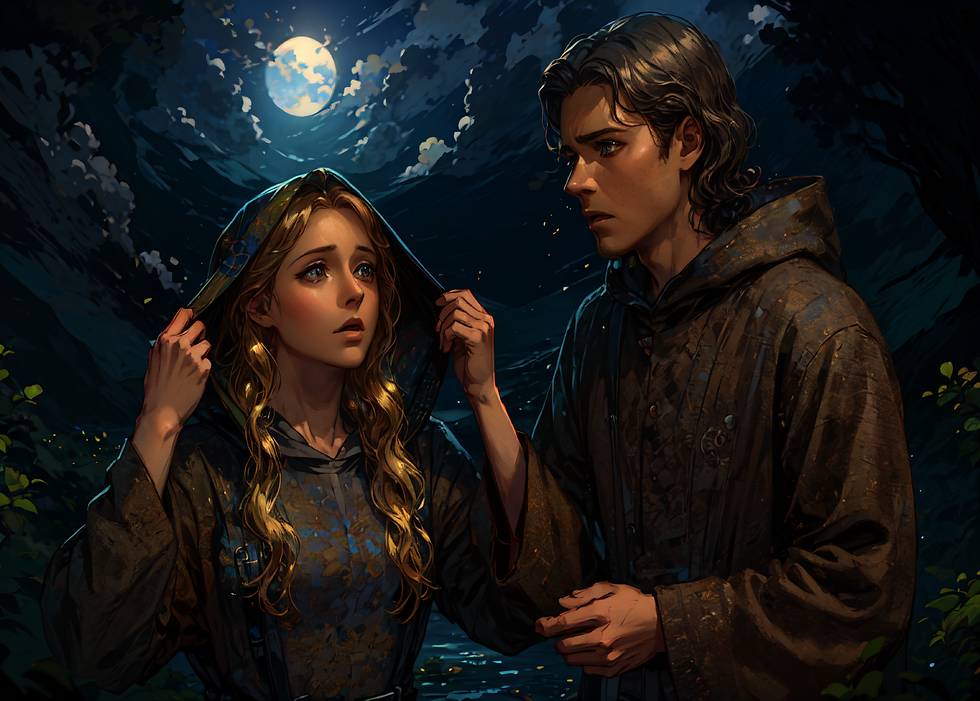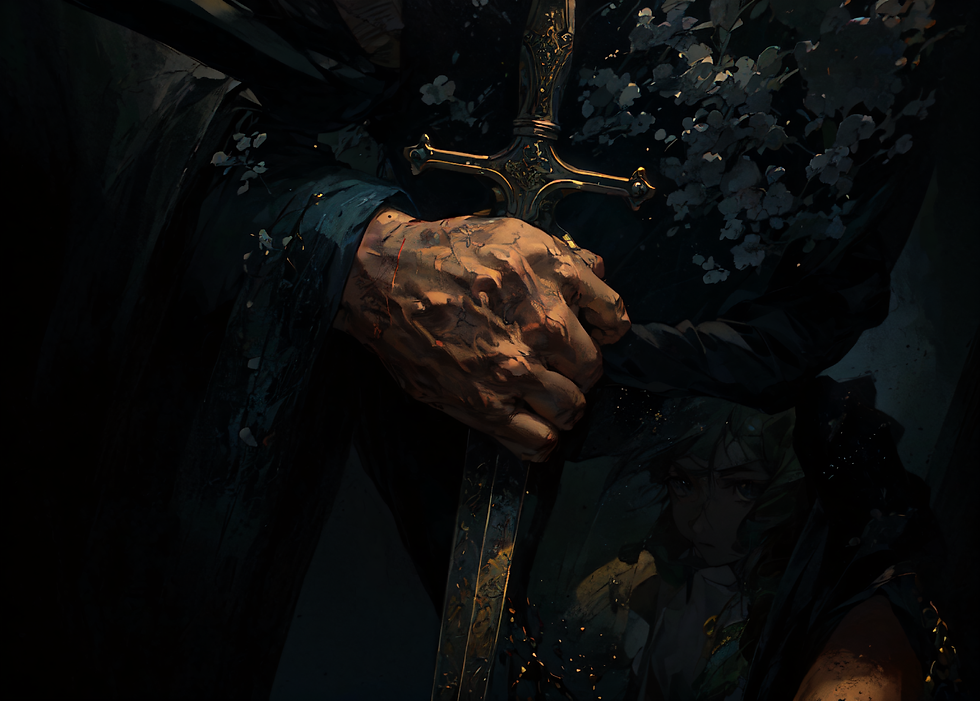The Best Gothic Horror Books of All Time: From Timeless Classics to Forgotten Nightmares
- Muna Toubi

- Aug 9
- 5 min read

A Doorway into the Shadows
Step gently, reader—past the rusted gate, along the moonlit path where the fog clings like a jealous lover. Here lies a library not bound by dust alone, but by whispers, curses, and the cold hand of the past. In the realm of gothic horror, pages drip with sorrow and temptation; the ink itself seems alive, slithering into your mind to plant seeds of dread. Whether the story unfolds in a candlelit crypt or upon a wind-swept moor, these tales do more than frighten—they enchant, seduce, and bind you.
Tonight, we descend into the vaults of the best gothic horror books, seeking both the timeless and the forgotten, those works that breathe in the dark and refuse to die.
What Makes a Gothic Horror Classic?
True classic gothic novels are not content to merely chill your blood—they seep into your bones. They live in grand, decaying structures, where every step echoes like a heartbeat in a coffin. They carry the perfume of old letters, the rot of secrets, the shimmering possibility of supernatural intrusion.
Common threads wind through these gothic literature recommendations:
Haunted spaces: manors collapsing under the weight of memory, castles whispering their lineage of doom.
The uncanny: ghostly shapes in the periphery, pacts signed in shadows.
Emotional extremity: passion that burns to ash, grief that suffocates.
Psychological depth: the mind as both sanctuary and prison.
These works endure not because they shock, but because they seduce you into the abyss.
The Midnight Canon: Horror Literature Must-Reads
Below, a procession of dark luminaries—each a black candle burning in the cathedral of gothic horror.
In the cloistered heart of a Spanish monastery, the saintly Ambrosio begins his descent—temptation slithers through the cracks, and soon the righteous man lies broken in the arms of sin. Deals with devils, hidden crimes, spectral visitations—this book is the scandalous soul of early gothic. A wicked treasure within the Gothic Obsession Collection.

2. Frankenstein — Mary Shelley (1818)
A lightning-lit laboratory. The fevered hands of Victor Frankenstein stitching together life from death. And the Creature, abandoned—aching for love, yet doomed to rage. A chilling meditation on creation and ruin, as alive today as it was in the snow-bound year it was written. Britannica’s entry captures its immortal legacy.
3. Dracula — Bram Stoker (1897)
From the howling Carpathians to the gaslit streets of London, Count Dracula moves like a shadow, feeding upon the living and corrupting the soul. Told through letters and diaries, the story pulses with forbidden desire and ancestral fear. Stoker gave the vampire its eternal crown.
4. Carmilla — J. Sheridan Le Fanu (1872)
Before Dracula, there was Carmilla—gliding into the night, lips tinged crimson, eyes brimming with secret longing. A tale of predatory intimacy and spectral love, wrapped in the stillness of Austrian castles. Its whispers still curl around the reader’s ear.
5. The Castle of Otranto — Horace Walpole (1764)
A giant helmet falls from the sky, crushing a young heir. Prophecies ignite, shadows stretch across cold corridors, and the first true “gothic” novel is born. Here lies the blueprint from which all other dark towers were built.
6. The Picture of Dorian Gray — Oscar Wilde (1890)
Beneath a London sky veiled in smoke, Dorian Gray remains eternally youthful while his hidden portrait decays into something monstrous. Beauty and corruption dance together in this Faustian fable—a mirror for the soul that dares to look.
7. Wuthering Heights — Emily Brontë (1847)
On the blasted moors, love and hate entwine like briars. Heathcliff and Catherine burn through life, leaving ruin in their wake, their spirits wandering the night. This is passion stripped of comfort—romance turned raw and spectral.
8. The Turn of the Screw — Henry James (1898)
Two children in a lonely country house. A governess who sees what no one else will admit. Are the ghosts real, or does madness bloom behind her eyes? James crafts a masterpiece of uncertainty—terror born from doubt.
9. Melmoth the Wanderer — Charles Maturin (1820)
An immortal soul roams the earth, seeking another to bear his curse. Manuscripts within manuscripts tell of despair across centuries. Dark, labyrinthine, and deeply moral—this book is a cathedral of shadows.
10. The Strange Case of Dr Jekyll and Mr Hyde — Robert Louis Stevenson (1886)
In respectable London, a man brews an elixir that splits the soul. By night, his darker self prowls the streets, unchecked and unrepentant. This slim volume contains one of horror’s greatest truths: the monster may wear your face.
11. The Phantom of the Opera — Gaston Leroux (1910)
Beneath the Paris Opera House lies a man disfigured in body, but not in genius. His music soars even as his heart festers with obsession. Love and terror entwine in the catacombs, echoing for over a century.
Illustrated Gothic Horror Books
For those who wish to see as well as feel the darkness, illustrated gothic horror books turn the imagination into something tangible. Shadow-drenched etchings of Frankenstein, richly inked depictions of Dracula, gilded borders curling like ivy—all transform reading into an act of devotion.

Where to Find These Treasures
Step into the candlelit aisles of the Horror Books Shop and gather your own reliquary of nightmares. There you’ll find collector’s editions, annotated works, and the rare illustrated volumes that make the macabre beautiful.
The Gothic Obsession Collection gathers the most decadent and haunting of these works—books that belong not just on shelves, but on altars.
Return again to the Horror Books Shop when you crave more, for the darkness there never sleeps.
Why These Stories Endure
These works are not mere fiction; they are revenants. Frankenstein warns of ambition; Dracula seduces with death; Carmilla whispers in the dark; Dorian Gray holds up a mirror; Wuthering Heights bleeds passion on the wind. They endure because they speak to the marrow of what it means to be human—to desire, to fear, to betray, to haunt.
FAQs About Gothic Horror Must-Reads
Q1: What defines a gothic novel as “classic”? Enduring influence, a blend of beauty and dread, and the shadows they leave in literature’s corridors.
Q2: Are illustrated editions worth it? Yes—illustrations pull the reader deeper into the gloom, making the experience tactile and uncanny.
Q3: Can modern readers still enjoy these works? Absolutely—their themes of love, loss, and terror are eternal.
Q4: Where should a beginner start? Frankenstein or Dracula—both pillars of the genre and still deeply readable.
Q5: Are these tales based on true events? Some, like Dracula, draw on folklore; others spring entirely from fevered imagination.
Q6: Where can I buy special editions? The Horror Books Shop offers annotated, illustrated, and collector’s editions.
Final Invitation into the Dark
The hour grows late, the candles low. Will you step into these corridors, where pages breathe and shadows speak? Seek them in the Horror Books Shop, hold them close, and let them haunt you. And when the last word falls silent, tell us—which of these best gothic horror books has claimed your soul?



Comments